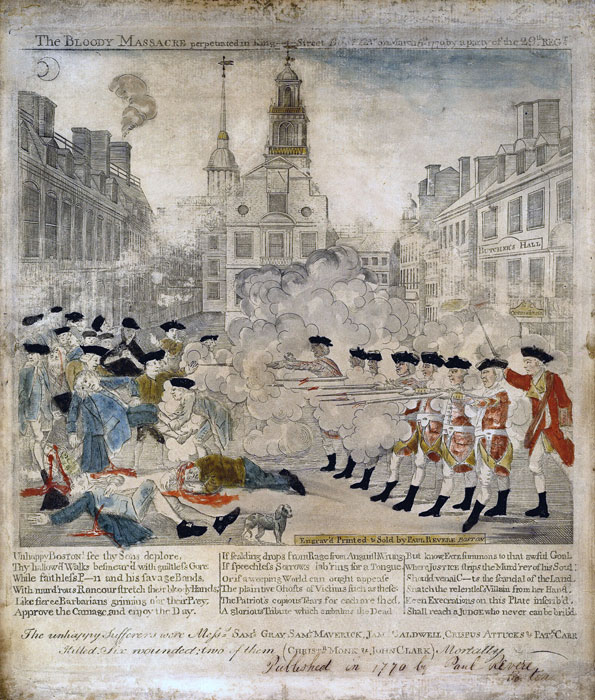Crispus Attucks (c.1723—March 5, 1770) was the first person killed in the Boston massacre, in Boston, Massachusetts, and is widely considered to be the first American casualty in the American Revolutionary War. Crispus Attucks died alongside Samuel Gray and James Caldwell, but little is known about Attucks.
In the fall of 1768, British soldiers were sent to Boston in an attempt to control growing colonial unrest, which had led to a spate of attacks on local officials following the introduction of the Stamp Act and the subsequent Townshend Acts. Radical Whigs had coordinated waterfront mobs against the authorities. The presence of troops through the Winter increased tension between opposing factions.
After dusk on March 5, 1770, a crowd of colonists confronted a British sentry who had chastised a boy for complaining that an officer did not pay a barber bill. Both townspeople and a company of British soldiers of the 29th Regiment of Foot gathered. The colonists threw snowballs and debris at the soldiers. Attucks and a group of men along with Attucks approached the Old State House armed with clubs. A soldier was struck with a piece of wood, which some witnesses claimed was thrown by Attucks. Other witnesses stated that Attucks was “leaning upon a stick” when the British soldiers opened fire.
Five colonists were killed and six were wounded in what came to known as the Boston Massacre (the British called it the Incident on King Street). Attucks took two ricocheted bullets in the chest and was the first to die. County coroners Robert Pierpoint and Thomas Crafts Jr. conducted an autopsy on Attucks, whose body was carried to Faneuil Hall, where it lay in state until Thursday, March 8. Attucks and the other victims were buried together in the same grave site in Boston’s Granary Burying Ground
Historians disagree on whether Crispus Attucks was a free man or an escaped slave, but most agree that he was of Wampanoag and African descent.
Attucks may have been a Native American slave or freeman, merchant seaman and dockworker of Wampanoag and African descent.
Circumstantial evidence suggests that Crispus Attucks’ father may have been Prince Yonger, an African-born slave and his mother, Nanny Peterattucks, a Natick Native American.
Two major sources of eyewitness testimony about the Boston Massacre, both published in 1770, did not refer to Attucks as “black” nor as a “Negro”; it appeared that Bostonians of European descent viewed him as being of mixed ethnicity.

